Today was a very gloomy day – both in terms of the weather but also in terms of the sites we visited. We began by visiting a bone chapel, similar to the one we had seen in Hallstatt but much larger and decorated. The bone chapel is believed to contain the bones of 40,000 people. The chapel in Kutna Hora dates from the 14th century, but the work or arranging the human bones within began around 1870. The construction of the free-standing pyramids of bones is quite remarkable and one wonders if the designers were more concerned with aesthetics than theology - some of the pyramids are over 9 feet high. According to our fact sheet, "the human bones represent the multitudes which none can count facing God's throne.
Death doesn’t make any difference". I interpreted that to mean that although we have a multitude of experiences and paths in life, death is certain and doesn’t discriminate. Of particular note was the chandelier in the center of the room that is constructed using every bone in the human body. I felt that the bone chapel in Hallstatt was creepier as it was in a much smaller space and the skulls surrounded you on three sides. Regardless, we didn’t want to linger here and once we’d had a good look around, made our way back to the car. We headed west, past our campsite again, towards the Jewish Ghetto of Terezin (prononunced THE-reh-zeen).
Terezin was a fortified town built in the 1780s during the reign of Maria Theresa to house political prisoners. In 1941, the Nazis removed the town’s 7000 inhabitants and brought in around 60,000 Jews, creating a ghetto. Terezin is quite different from the concentration camps because it is actually a town that was converted by the Nazis for a gruesome purpose. Hence, you don’t immediately see the traditional guard towers, walls with barbed wires and so forth. Don’t mistake this for a lack of defenses because the town itself was already fortified, the Nazis just augmented to the existing facilities. To an outsider, the ghetto almost looked like a regular town because that’s what it was previously to its occupation. There is a town square lined with trees, school buildings, hospital and other similar buildings you would expect to find. Everything the Nazi’s did was pre-meditated, as was the selection of this town as the site of a ghetto.
It was conveniently located to funnel Jews through to satellite labour and concentration camps. The railway went through town which meant transport was not an issue. Since it looked like a livable place on virtue of being like a town, this was the Nazi’s “model Jewish town” to be paraded to the world to demonstrate the compassion of Hitler and his followers. In order to fuel this propaganda, they enabled a system of “self-government” where Jewish culture seemed to thrive as “citizens” put on plays and concerts, published a magazine and raised their families.
But it was such a well-planned deception that it fooled a team of Red Cross humanitarian experts who gave it the thumbs up in their report. Perhaps this was because the Nazis spent a year (or rather drove its inmates to) preparing the town for the inspection and the so-called “experts” from the Red Cross spent a whole six hours inspecting the entire ghetto. To give you an idea of how big Terezin is, we spent about 5 hours there and we just visited a few of the key buildings. Unfortunately, nearly all of Terezin’s Jew’s, numbering 155,000 over the course of the war, died there or in extermination camps elsewhere. What is perhaps even more cruel is that of the 15,000 children who passed through Terezin from 1942-44, fewer than 100 survived. One of their lasting legacies is the artwork they created, part of which we saw displayed in the Pinkas Synagogue in Prague.
We began our exploration of this sad chapter in history at the small fortress, which is about 1.5 km outside the main town. This was the Gestapo prison during the war period and inmates here, many of which were political prisoners, were treated especially cruelly. Most of the deaths here were caused due to malnutrition and disease. Executions still occurred here but there was no gas chamber. Speaking of the deception used by the Nazis, there were even bathing and washing facilities here, fully fitted with sinks and pipes. The Red Cross inspectors didn’t bother to turn the taps, which were never actually connected. The showers, too, were only used so as to not make the inmates suspicious when they were eventually sent on to gas chambers elsewhere.
Before exiting the fortress, we watched the propaganda film “The Fuhrer Gives a City to the Jews” which portrays the Hitler as this benevolent, fatherly figure whose concern for the welfare of the Jews is so magnanimous that the Jews are thriving in towns such as Terezin. Could anything have been further from the truth? The “self-governing citizens” of Terezin are shown playing football, performing plays, going to school and even tending to vegetable gardens. Tended by starving, malnourished Jews, the produce all went to the well-fed SS officers. It was enough to make one sick and thankfully the movie was only a few minutes long but was testament to how thorough the propaganda machine of the Nazi regime was.
We then made our way back to the town and checked out the Hidden Synagogue, execution ground and mass grave. We also visited the Columbarium which where the Nazis deposited cardboard boxes containing the ashes of dead prisoners. The Germans had originally promised to send these ashes to relatives but as the end of the war neared, they were only concerned with eradicating evidence and thus dumped the ashes into the nearby New Ohre River. We also saw the crematorium, Jewish Cemetary and morgue. Intentional or not, the railway tracks leading into Terezin passed by these buildings, into town, and out the other site to extermination camps like Auschwitz.
The common saying among inmates was that the only way out of Terezin was in a coffin. We ended our tour of the concentration camp at the Museum of the Ghetto, which is housed in one the boys dormitories. There were two floors of excellent exhibits with accompany audio guide that alone would have taken several hours to do justice but unfortunately the museum was closing in 45 minutes. There was also a special exhibit that followed the lives of a few of the survivors of Terezin and what had become of them. It was very heartening to see that many of them had gone on to lead successful and happy lives, albeit scarred by the trauma they had experienced here.
It was very eerie walking around the town of Terezin – the streets were empty, it was gloomy and overcast and the buildings and streets looked a bit run down. We both wondered who would actually choose to live in a place like Terezin given its very recent, gruesome history and wondered if they lived here because they have roots here or live here out of necessity. As we drove away from Terezin that evening, I was very saddened by the reality of what we had seen but was more educated for having visited the memorial.
I felt that I had at the very least, done a small part in preserving the legacy of those whose lives were pre-maturely ended by the Nazis. Once again, this well preserved memorial stands to hopefully convey the message to all that visit: Never Again.
We set off in the dark to find out next campsite in Seiffen, Germany. We had our google map route, our gps and the local map for Germany since we knew we had to navigate some smaller roads to get through the mountains. The first part went fine, but once we were supposed to turn off, we realized that Czech road signs in tiny towns are not actually that helpful since they often listed other small towns which didn’t show up on our map. We ended up choosing one route, driving for a bit, decided we were heading the wrong direction by the compass heading on the gps, would then turn around and take the other option back at the intersection. We did this about three times before heading up a mountain road which seemed to take us in the right direction. We eventually crossed over into Germany which we figured was a good sign and stopped at a gas station since we couldn’t read all the road signs in the dark and needed to get our bearings. Anoop stepped out and actually saw Seiffen on a sign – a great relief!!! We passed through the town and drove for 3 km or so until we arrived at the campsite. We were very happy to finally be settled in camp since the drive had been rather long, dark and twisty!
Kutna Hora and Terezin Ghetto
Wednesday, November 07, 2012
 Terezin, Bohemia, Czech Republic
Terezin, Bohemia, Czech Republic
Other Entries
-
47The Rothorn and Schynige Platte
Oct 0533 days prior Lauterbrunnen, Switzerlandphoto_camera73videocam 0comment 2
Lauterbrunnen, Switzerlandphoto_camera73videocam 0comment 2 -
48Mannlichen and First
Oct 0632 days prior Lauterbrunnen, Switzerlandphoto_camera39videocam 0comment 1
Lauterbrunnen, Switzerlandphoto_camera39videocam 0comment 1 -
49Castles in Bavaria
Oct 0830 days prior Füssen, Germanyphoto_camera47videocam 1comment 2
Füssen, Germanyphoto_camera47videocam 1comment 2 -
50Linderhof Palace & Rococo churches
Oct 1028 days prior Linderhof, Germanyphoto_camera39videocam 0comment 4
Linderhof, Germanyphoto_camera39videocam 0comment 4 -
51Munich
Oct 1226 days prior Munich, Germanyphoto_camera157videocam 0comment 5
Munich, Germanyphoto_camera157videocam 0comment 5 -
52Herrenchiemsee palace
Oct 1325 days prior Herrnchiemsee, Germanyphoto_camera9videocam 0comment 1
Herrnchiemsee, Germanyphoto_camera9videocam 0comment 1 -
53Innsbruck
Oct 1424 days prior Innsbruck, Austriaphoto_camera85videocam 0comment 7
Innsbruck, Austriaphoto_camera85videocam 0comment 7 -
54Return to Forni di Sopra
Oct 2117 days prior Forni di Sopra, Italyphoto_camera24videocam 0comment 5
Forni di Sopra, Italyphoto_camera24videocam 0comment 5 -
55Berchtesgaden
Oct 2315 days prior Berchtesgaden, Germanyphoto_camera18videocam 0comment 1
Berchtesgaden, Germanyphoto_camera18videocam 0comment 1 -
56Salzburg
Oct 2414 days prior Salzburg, Austriaphoto_camera48videocam 0comment 0
Salzburg, Austriaphoto_camera48videocam 0comment 0 -
57Hallstatt
Oct 2513 days prior Hallstatt, Austriaphoto_camera37videocam 0comment 3
Hallstatt, Austriaphoto_camera37videocam 0comment 3 -
58Mauthausen Concentration Camp
Oct 2612 days prior Mauthausen, Austriaphoto_camera22videocam 0comment 1
Mauthausen, Austriaphoto_camera22videocam 0comment 1 -
59Melk Abbey
Oct 2711 days prior Melk, Austriaphoto_camera66videocam 0comment 1
Melk, Austriaphoto_camera66videocam 0comment 1 -
60Vienna
Oct 317 days prior Vienna, Austriaphoto_camera133videocam 0comment 1
Vienna, Austriaphoto_camera133videocam 0comment 1 -
61Telc & Trebon
Nov 025 days prior Telc, Czech Republicphoto_camera23videocam 0comment 1
Telc, Czech Republicphoto_camera23videocam 0comment 1 -
62Cesky Krumlov
Nov 034 days prior Cesky Krumlov, Czech Republicphoto_camera25videocam 0comment 1
Cesky Krumlov, Czech Republicphoto_camera25videocam 0comment 1 -
63Prague
Nov 061 day prior Prague, Czech Republicphoto_camera83videocam 2comment 4
Prague, Czech Republicphoto_camera83videocam 2comment 4 -
64Kutna Hora and Terezin Ghetto
Nov 07 Terezin, Czech Republicphoto_camera33videocam 0comment 3
Terezin, Czech Republicphoto_camera33videocam 0comment 3 -
65Christmas Town of Seiffen
Nov 092 days later Seiffen, Germanyphoto_camera49videocam 0comment 5
Seiffen, Germanyphoto_camera49videocam 0comment 5 -
66Nazi Party Rally Grounds in Nuremberg
Nov 114 days later Nuremberg, Germanyphoto_camera21videocam 0comment 1
Nuremberg, Germanyphoto_camera21videocam 0comment 1 -
67Rothenburg
Nov 125 days later Rothenburg ob der Tauber, Germanyphoto_camera50videocam 0comment 1
Rothenburg ob der Tauber, Germanyphoto_camera50videocam 0comment 1 -
68Planes, Trains and Automobiles
Nov 147 days later Mulhouse, Francephoto_camera34videocam 0comment 6
Mulhouse, Francephoto_camera34videocam 0comment 6 -
69Beaune
Nov 158 days later Beaune, Francephoto_camera60videocam 0comment 7
Beaune, Francephoto_camera60videocam 0comment 7 -
70Royan
Nov 1912 days later Royan, Francephoto_camera9videocam 0comment 4
Royan, Francephoto_camera9videocam 0comment 4 -
71A second visit to London
Nov 2518 days later London, United Kingdomphoto_camera93videocam 0comment 15
London, United Kingdomphoto_camera93videocam 0comment 15 -
72En route to Bangalore
Nov 2619 days later Dubai, United Arab Emiratesphoto_camera10videocam 0comment 3
Dubai, United Arab Emiratesphoto_camera10videocam 0comment 3 -
73Bangalore
Dec 1639 days later Bangalore, Indiaphoto_camera134videocam 0comment 17
Bangalore, Indiaphoto_camera134videocam 0comment 17 -
74London, our third and final visit?
Dec 1942 days later London, United Kingdomphoto_camera32videocam 1comment 2
London, United Kingdomphoto_camera32videocam 1comment 2 -
75Visiting friends in Scotland
Jan 0458 days later Beith, United Kingdomphoto_camera68videocam 0comment 4
Beith, United Kingdomphoto_camera68videocam 0comment 4 -
76Preparing for new adventures
Jan 0862 days later Royan, Francephoto_camera3videocam 0comment 0
Royan, Francephoto_camera3videocam 0comment 0 -
77Citadel in Blaye & Dune de Pilat
Jan 1064 days later Blaye, Francephoto_camera13videocam 0comment 0
Blaye, Francephoto_camera13videocam 0comment 0 -
78Minh-Yen arrives!
Jan 1165 days later Zarautz, Spain and Canary Islandsphoto_camera7videocam 0comment 0
Zarautz, Spain and Canary Islandsphoto_camera7videocam 0comment 0 -
79Tapas in San Sebastian
Jan 1266 days later San Sebastián - Donostia, Spain and Canary Islandsphoto_camera37videocam 0comment 6
San Sebastián - Donostia, Spain and Canary Islandsphoto_camera37videocam 0comment 6 -
80Biarritz
Jan 1468 days later Biarritz, Francephoto_camera27videocam 0comment 2
Biarritz, Francephoto_camera27videocam 0comment 2 -
81St. Jean de Luz
Jan 1569 days later Saint-Jean-de-Luz, Francephoto_camera19videocam 0comment 4
Saint-Jean-de-Luz, Francephoto_camera19videocam 0comment 4 -
82An unforgettable lunch in Bilbao
Jan 1670 days later Bilbao, Spain and Canary Islandsphoto_camera28videocam 0comment 1
Bilbao, Spain and Canary Islandsphoto_camera28videocam 0comment 1
Comments
2025-05-22
Comment code: Ask author if the code is blank

 Terezin, Bohemia, Czech Republic
Terezin, Bohemia, Czech Republic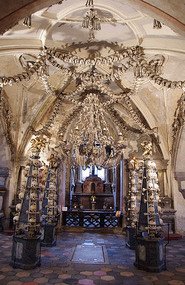
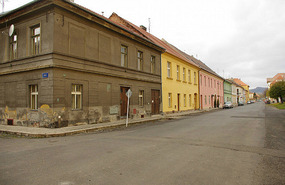
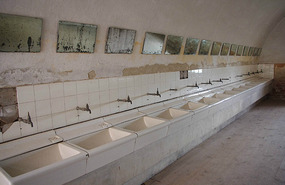
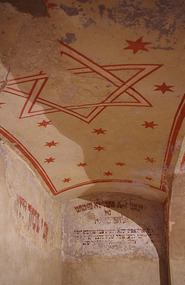
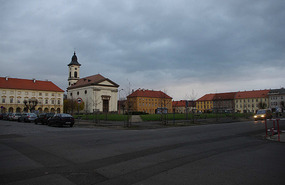






































MYL
2014-04-19
This was very well written guys! I've been to Tuol Sleng S21 Concentration Camp in Phnom Penh Cambodia and I couldn't finish walking through the entire grounds because it was just too much for me to take in. I had to sit outside on a park bench and cry my heart out. I'm not sure if I can stomach going to a Jewish ghetto / concentration camp. But you make a very good point, it's important for us to go and to pay respect to those whose lives were taken too soon. We have to remember this part in history so that we can prevent it from happening.